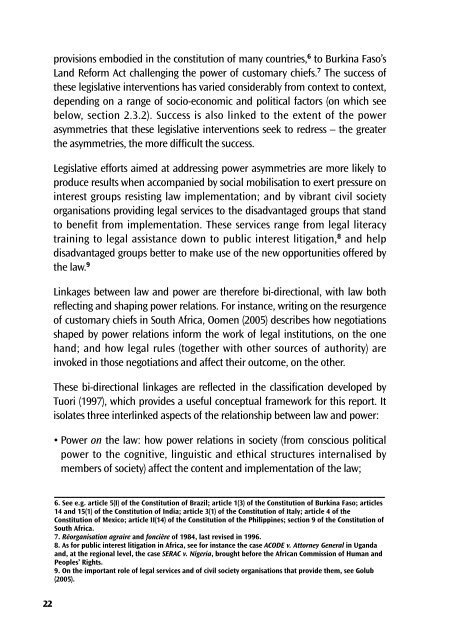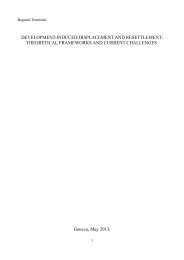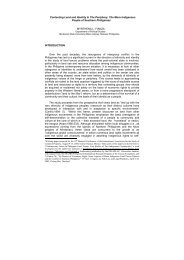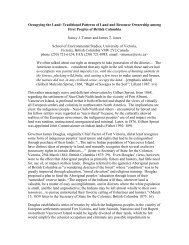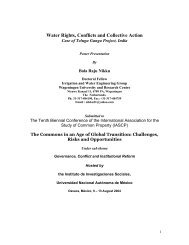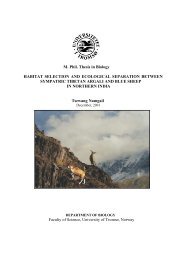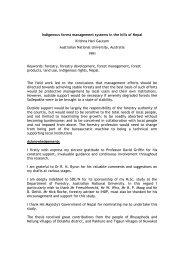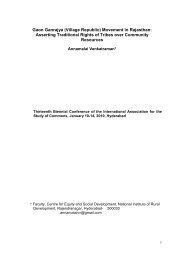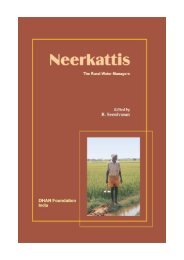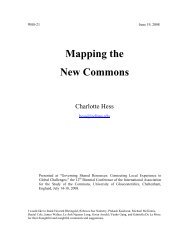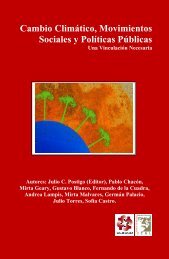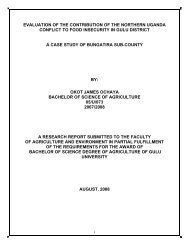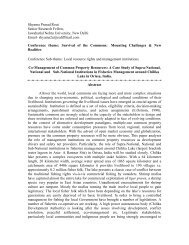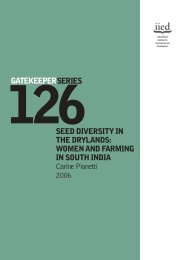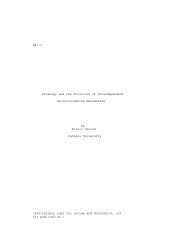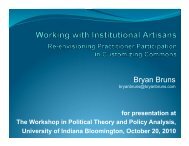Legal empowerment for local resource control
Legal empowerment for local resource control
Legal empowerment for local resource control
You also want an ePaper? Increase the reach of your titles
YUMPU automatically turns print PDFs into web optimized ePapers that Google loves.
22<br />
provisions embodied in the constitution of many countries, 6 to Burkina Faso’s<br />
Land Re<strong>for</strong>m Act challenging the power of customary chiefs. 7 The success of<br />
these legislative interventions has varied considerably from context to context,<br />
depending on a range of socio-economic and political factors (on which see<br />
below, section 2.3.2). Success is also linked to the extent of the power<br />
asymmetries that these legislative interventions seek to redress – the greater<br />
the asymmetries, the more difficult the success.<br />
Legislative ef<strong>for</strong>ts aimed at addressing power asymmetries are more likely to<br />
produce results when accompanied by social mobilisation to exert pressure on<br />
interest groups resisting law implementation; and by vibrant civil society<br />
organisations providing legal services to the disadvantaged groups that stand<br />
to benefit from implementation. These services range from legal literacy<br />
training to legal assistance down to public interest litigation, 8 and help<br />
disadvantaged groups better to make use of the new opportunities offered by<br />
the law. 9<br />
Linkages between law and power are there<strong>for</strong>e bi-directional, with law both<br />
reflecting and shaping power relations. For instance, writing on the resurgence<br />
of customary chiefs in South Africa, Oomen (2005) describes how negotiations<br />
shaped by power relations in<strong>for</strong>m the work of legal institutions, on the one<br />
hand; and how legal rules (together with other sources of authority) are<br />
invoked in those negotiations and affect their outcome, on the other.<br />
These bi-directional linkages are reflected in the classification developed by<br />
Tuori (1997), which provides a useful conceptual framework <strong>for</strong> this report. It<br />
isolates three interlinked aspects of the relationship between law and power:<br />
Power on the law: how power relations in society (from conscious political<br />
power to the cognitive, linguistic and ethical structures internalised by<br />
members of society) affect the content and implementation of the law;<br />
6. See e.g. article 5(I) of the Constitution of Brazil; article 1(3) of the Constitution of Burkina Faso; articles<br />
14 and 15(1) of the Constitution of India; article 3(1) of the Constitution of Italy; article 4 of the<br />
Constitution of Mexico; article II(14) of the Constitution of the Philippines; section 9 of the Constitution of<br />
South Africa.<br />
7. Réorganisation agraire and foncière of 1984, last revised in 1996.<br />
8. As <strong>for</strong> public interest litigation in Africa, see <strong>for</strong> instance the case ACODE v. Attorney General in Uganda<br />
and, at the regional level, the case SERAC v. Nigeria, brought be<strong>for</strong>e the African Commission of Human and<br />
Peoples’ Rights.<br />
9. On the important role of legal services and of civil society organisations that provide them, see Golub<br />
(2005).


